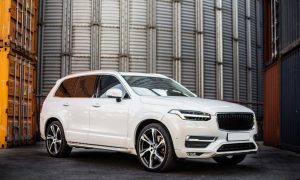When Chevrolet first flipped the script with the mid-engine Corvette C8, enthusiasts knew it was only the beginning. The Stingray set the stage, the Z06 raised the stakes, and now the ZR1 arrives as the apex predator. This is not just a Corvette—it’s a statement to the supercar world that American engineering can go head-to-head with Europe’s finest.
At the core of that performance sits not just the LT7 twin-turbo V8 but also the tires that keep all that fury glued to the road. Supercars live and die by their contact patches, and for the C8 ZR1, every millimeter counts. The question burning in the minds of owners and fans alike is simple: What size tires are on the Corvette ZR1 C8? Let’s break it down in detail.
The Pinnacle of Performance in Chevrolet Corvette ZR1 C8
The ZR1 has always been the halo Corvette. It isn’t just about speed—it’s about precision, consistency, and pushing boundaries. Historically, ZR1 models have been tire-shredding beasts, but the C8 ZR1 is different. With its mid-engine layout, balance is sharper than ever, meaning the tire setup needed to evolve.
Chevrolet engineers collaborated with Michelin, as they did for the Z06, to develop a tire package that can withstand repeated track abuse while still performing on the street. This isn’t a car where you toss on any performance rubber from your local shop—it’s a bespoke arrangement made to handle nearly 900 horsepower.
Why Tire Size is Paramount for a Twin-Turbocharged Supercar?

Tires are the unsung heroes of performance cars. Think about it: a twin-turbo 5.5-liter V8 may pump out monstrous power, but if the rubber can’t grip, all that engineering brilliance goes to waste.
On a supercar like the ZR1, tire size dictates everything from acceleration and braking to cornering g-force and even top speed stability. Too narrow, and you’re sliding more than sprinting. Too wide, and you compromise agility and introduce drag. It’s a balancing act, and the ZR1’s dimensions reflect years of testing on both track and street.
The Definitive Answer: OEM Tire Sizes for the Corvette ZR1 C8
So, let’s answer the question head-on: What size tires are on the Corvette ZR1 C8?
The C8 ZR1 comes from the factory with a staggered tire setup, meaning the front and rear tires are different sizes. This is common in high-performance cars because the rear wheels have to handle the majority of power delivery while the fronts focus more on steering precision.
Front Tire Specifications
Up front, the ZR1 wears 275/30ZR20 Michelin Pilot Sport Cup 2 R tires mounted on 20-inch wheels.
That number isn’t random. The 275 width ensures that the front has enough grip to manage sharp cornering inputs without washing out into understeer. The 30 aspect ratio keeps the sidewall short, reducing flex at high speeds. Combined, it means precise handling and responsive steering that feels razor-sharp whether you’re attacking a corner at Laguna Seca or carving through an open canyon road.
Rear Tire Specifications
Out back, things get even more serious. The ZR1 runs 345/25ZR21 Michelin Pilot Sport Cup 2 R tires on 21-inch wheels.
That’s a massive footprint, and it’s there for a reason. With the LT7’s power trying to break traction every time you floor it, Chevrolet had to ensure that acceleration doesn’t just spin rubber into smoke. The 345 width is wider than most production cars on the market and is comparable to hypercars from Ferrari or McLaren. That added grip also stabilizes the vehicle at high speeds—essential when the ZR1 is capable of exceeding 215 mph.
The Strategic Staggered Setup
If you’ve ever driven a car with equal-size tires all around, you know it feels balanced but sometimes lacks that aggressive rear-driven stance. The staggered setup on the ZR1 addresses this issue.
The narrower fronts mean agility and precision steering. The massive rear tires provide stability, grip, and raw power delivery. Together, they give the ZR1 a dual personality—nimble when you need it to be, ferocious when you unleash the turbos.
The “Why” Behind the ZR1’s Tire Dimensions
Chevrolet could have opted for a more conservative setup, but that would have limited the car’s true potential. The chosen dimensions reflect countless hours of wind tunnel work, track testing, and tire compound tweaking.
The ZR1 isn’t chasing bragging rights with massive wheels for looks—it’s a calculated decision. Wider rear tires help keep the car controllable when pushing over 870 horsepower. Lower sidewalls enhance steering feedback and reduce squirm under load. It’s engineering meeting artistry.
Harnessing the LT7 Engine’s Power
Let’s not forget why these tires matter so much—the LT7 engine. This twin-turbocharged flat-plane crank V8 is a monster, pushing output that rivals cars twice its price.
Without the proper tire setup, all that engineering would turn into wheelspin and smoke. The tire package allows the ZR1 to put its power down efficiently, transforming sheer numbers into usable performance. It’s why Chevy can confidently claim this car doesn’t just sprint—it dominates both drag strips and road courses.
What do These Tires Enable on the Road and Track?
Here’s where things get exciting. With this setup, the ZR1 isn’t just fast in a straight line—it’s sticky in corners, predictable under braking, and stable at ridiculous speeds.
On the track, that means lap times that embarrass six-figure competitors. On the road, it translates to confidence, whether you’re merging onto the freeway or sweeping through mountain passes. Those massive rears let you lay into the throttle without fear, while the fronts communicate every ounce of road texture back to your hands.
Unrivaled Acceleration and Braking Performance
A car’s 0–60 sprint doesn’t just come from horsepower—it comes from traction. With these tires, the ZR1 rockets to 60 mph in under 2.7 seconds, putting it in supercar territory.
Braking benefits too. Wide tires mean larger contact patches, which provide more stopping power. Combined with carbon-ceramic brakes, the ZR1 sheds speed almost violently, yet with control that inspires confidence.
The Importance of Tire Pressure
All of this depends on proper tire pressure. Too low, and you risk overheating, sidewall flex, and uneven wear. Too high, and you lose grip because the contact patch becomes too small.
Chevy includes recommended settings for both road and track use, and owners quickly learn that minor tweaks—sometimes as little as two psi—can significantly alter the handling feel. It’s a reminder that the ZR1 is not a casual commuter but a machine that rewards attention to detail.
Maintaining Your ZR1’s Performance at Tire Care and Longevity

With outstanding performance comes responsibility. These tires aren’t cheap, and they wear faster than your average daily driver’s set. Michelin’s Cup 2 R compound is designed for maximum grip, not maximum life.
Owners who hit the track will likely burn through them quickly, while street-focused drivers can stretch them further with careful maintenance. Regular rotation (when possible), proper storage, and alignment checks are crucial. Think of it like maintaining a racehorse—you can’t just set it and forget it.
Is the Corvette ZR1 faster than a Hellcat?
This question often arises, and it’s worth addressing. The Dodge Hellcat is a legend in its own right, famous for brute-force horsepower. However, when you compare it to the ZR1, the story changes.
The ZR1 is lighter, more balanced, and far better at putting power to the ground through its advanced tire setup. While the Hellcat can overwhelm its rear tires in a cloud of smoke, the ZR1 hooks up and rockets forward. On a track, it’s not even close—the Corvette’s engineering dominance shines through.
Conclusion
So, what size tires are on the Corvette ZR1 C8? The answer is 275/30ZR20 fronts and 345/25ZR21 rears, all wrapped in Michelin Pilot Sport Cup 2 R rubber.
Those numbers aren’t just trivia—they’re the foundation that lets the ZR1 channel nearly 900 horsepower into a controlled, breathtaking driving experience. They define how the car corners, how it accelerates, and how it outperforms rivals.
The next time someone asks why tire size matters, point to the ZR1. It’s proof that in the world of supercars, rubber isn’t just part of the car—it is the car.
FAQs
The ZR1 C8 features 275/30ZR20 tires in the front and 345/25ZR21 tires in the rear.
Technically, yes, but you’ll sacrifice grip and performance. The OEM Michelin Pilot Sport Cup 2 R is designed specifically for this car.
It depends on driving style. Track use can wear them out in a few thousand miles, while careful street driving can extend lifespan.
The rear tires need to handle significantly more power, while the front tires prioritize steering precision and response.
Yes. The ZR1 is quicker in acceleration, sharper on track, and more composed thanks to its advanced tire setup.




